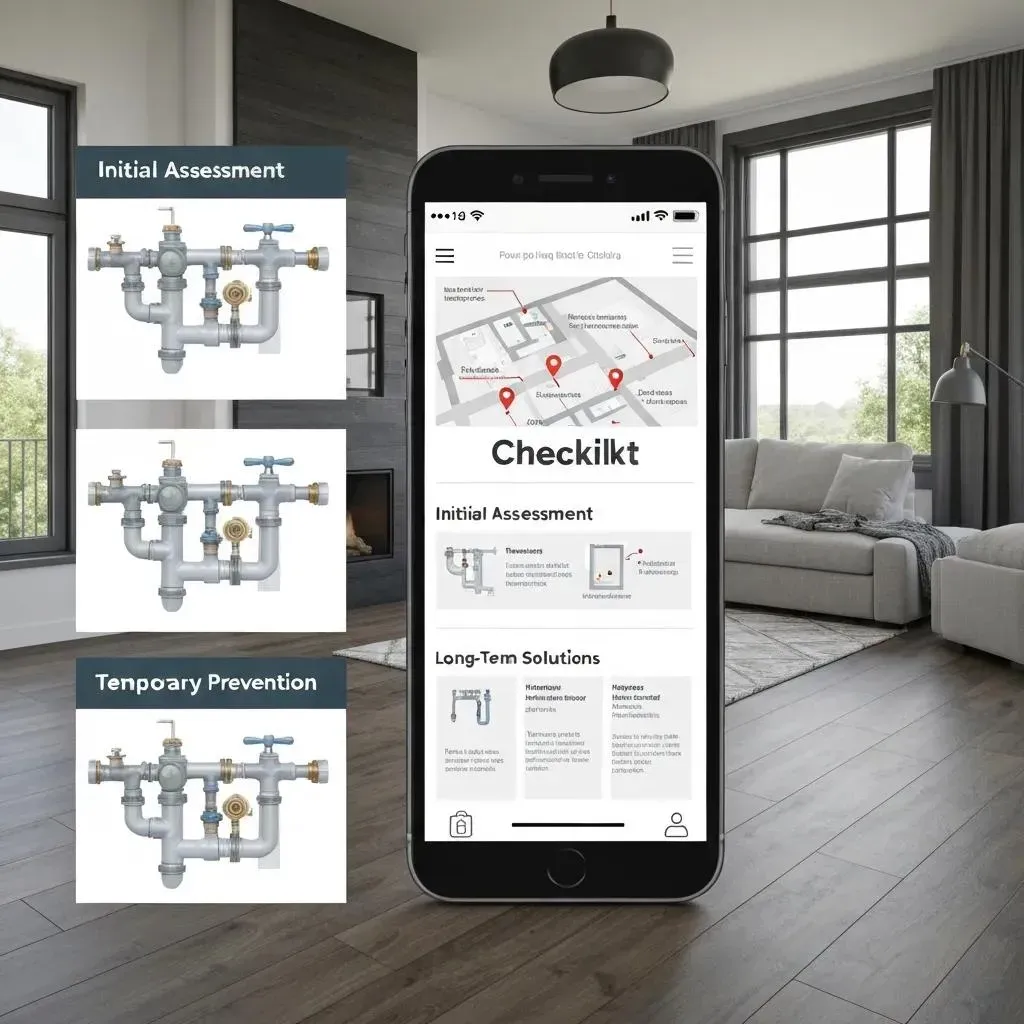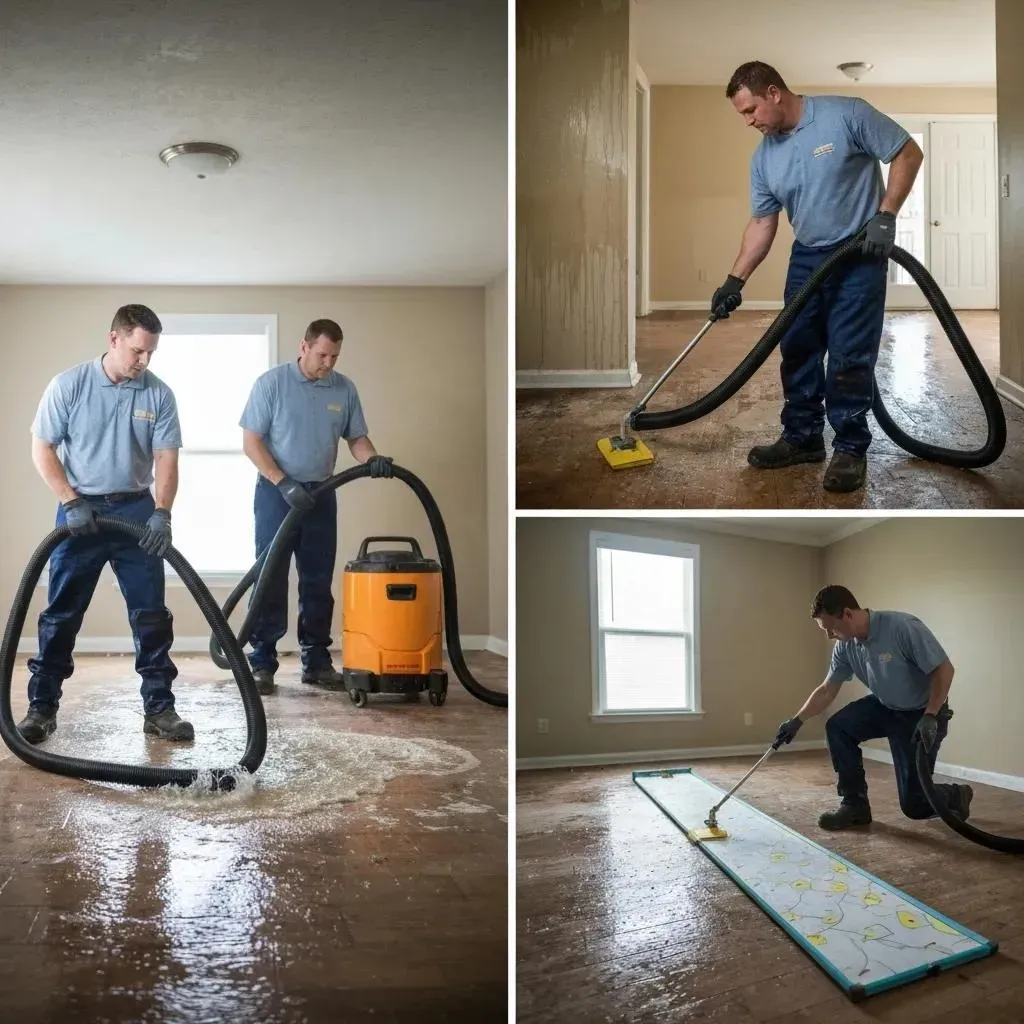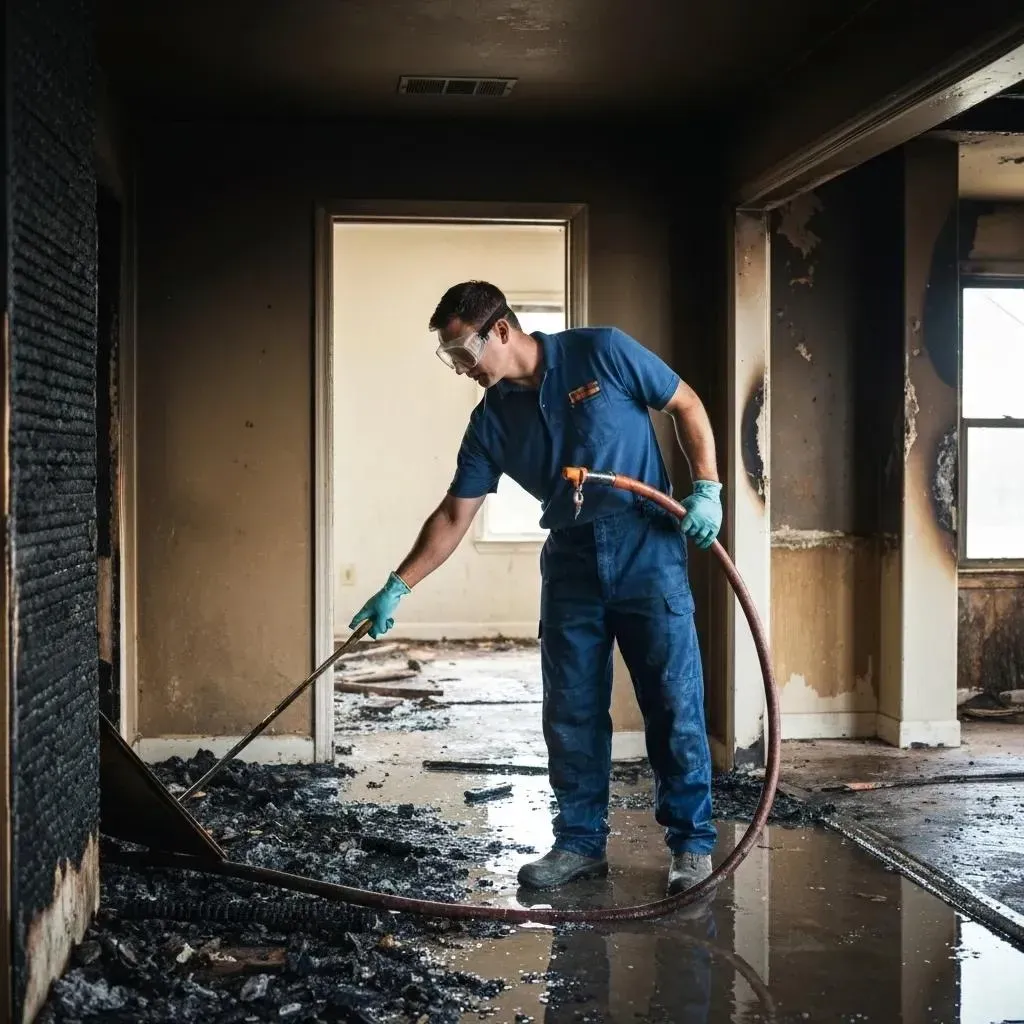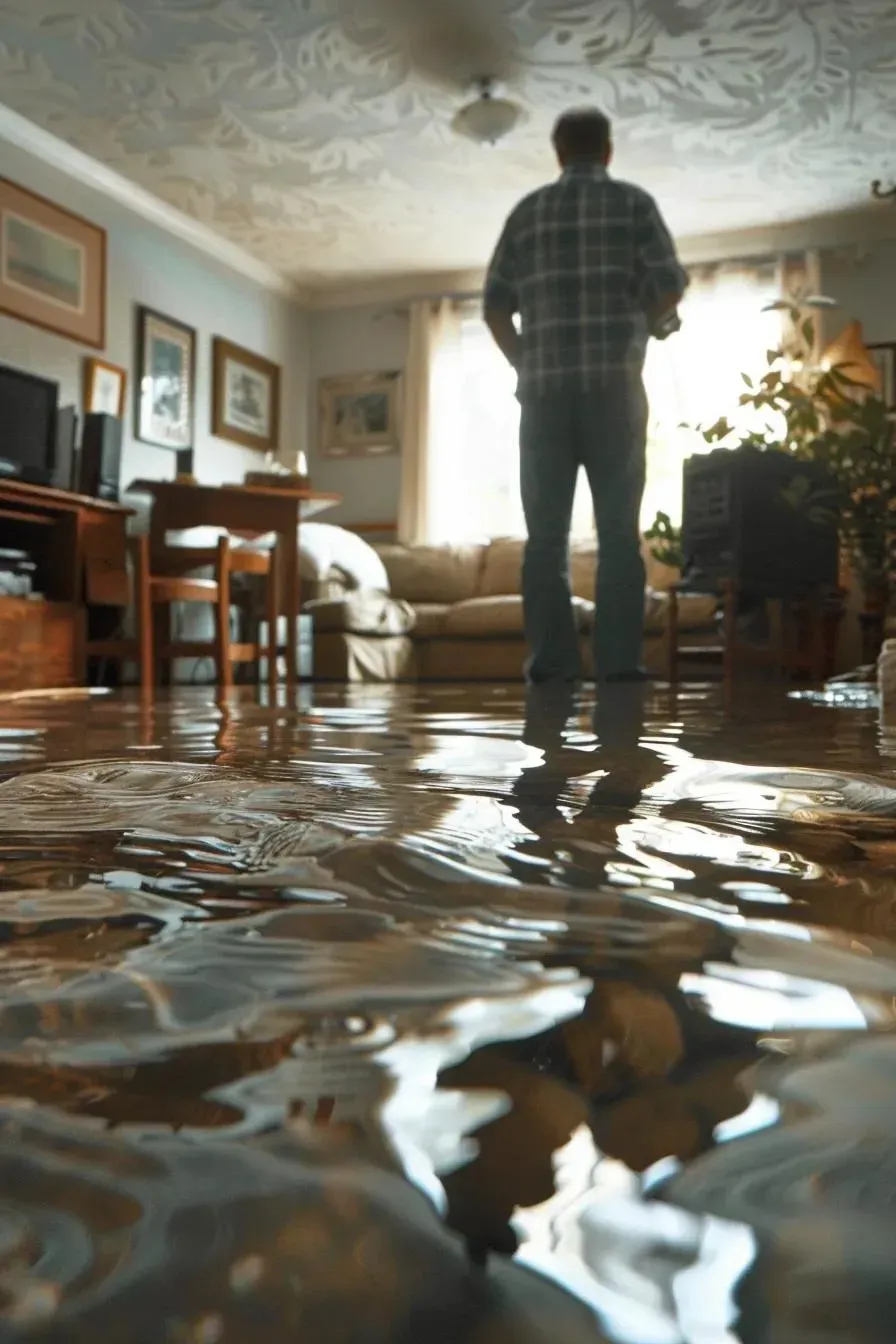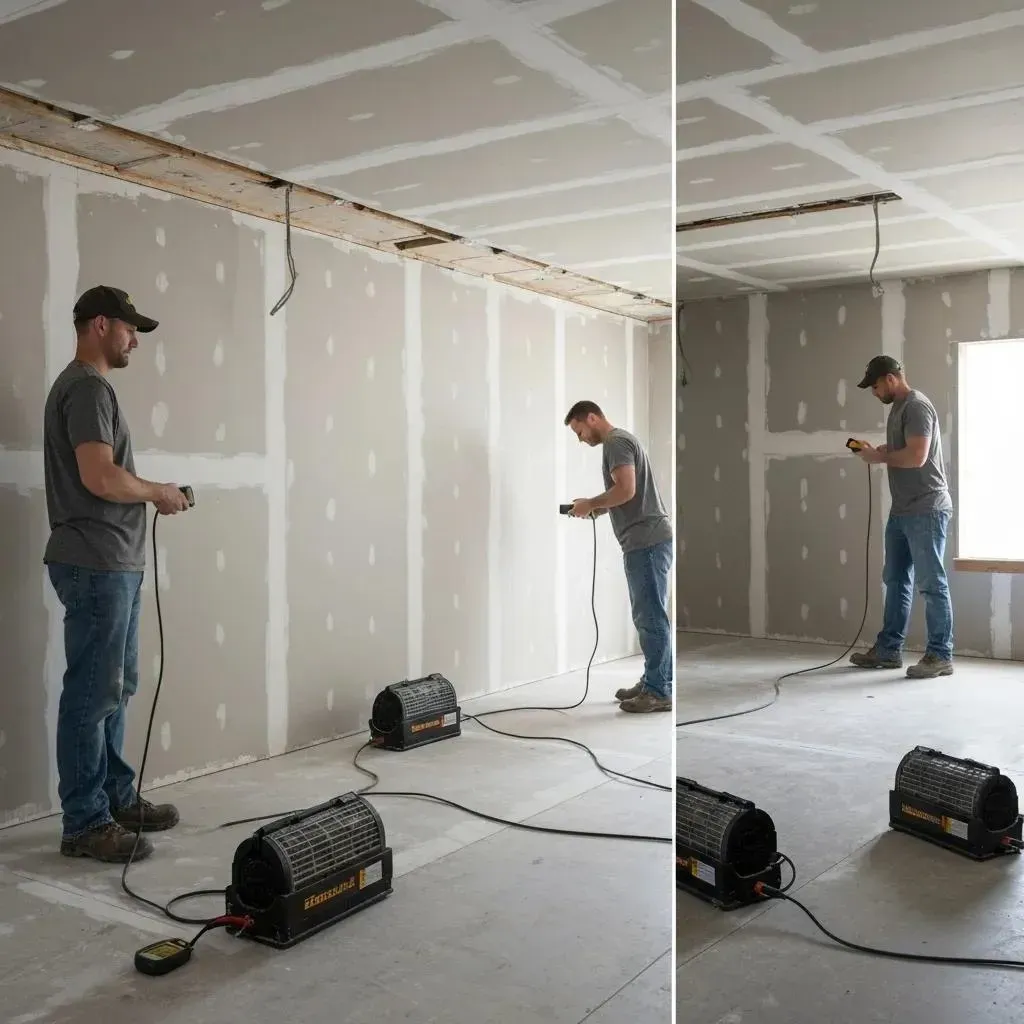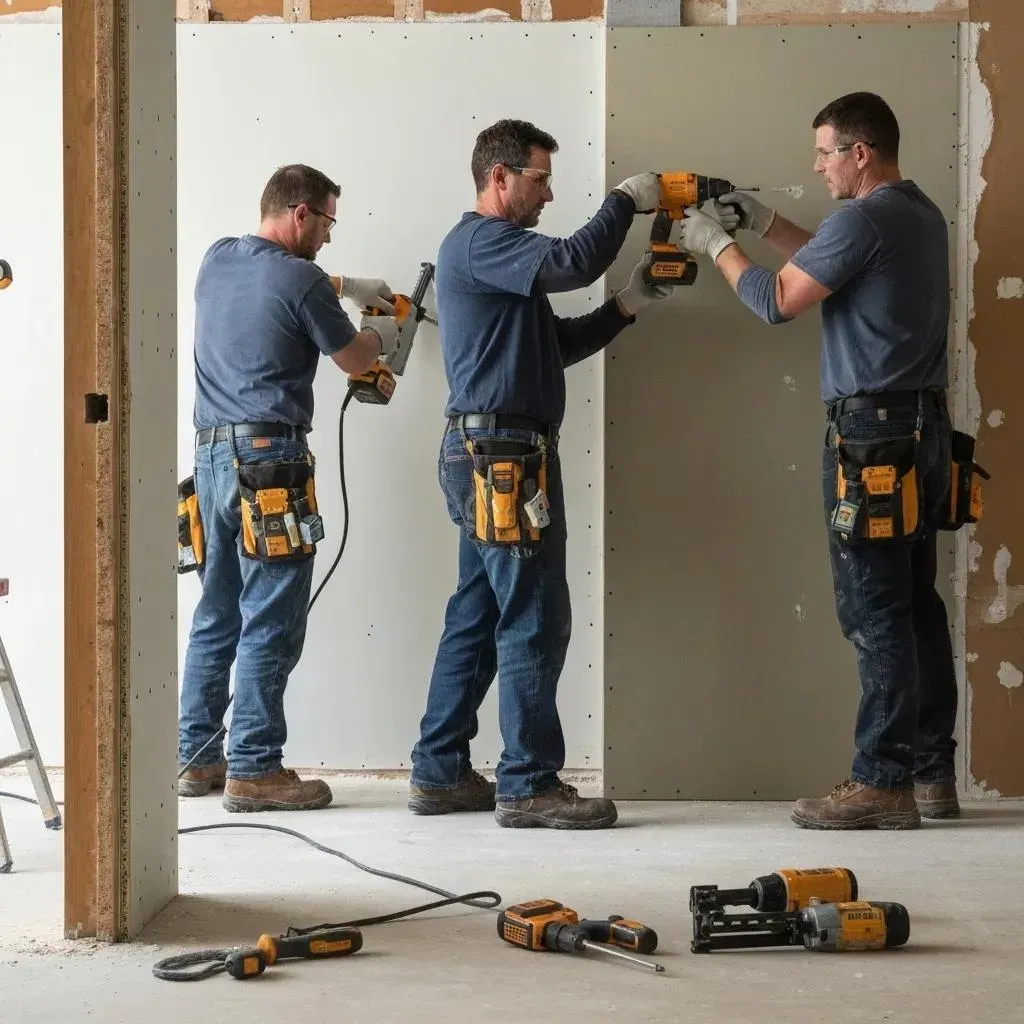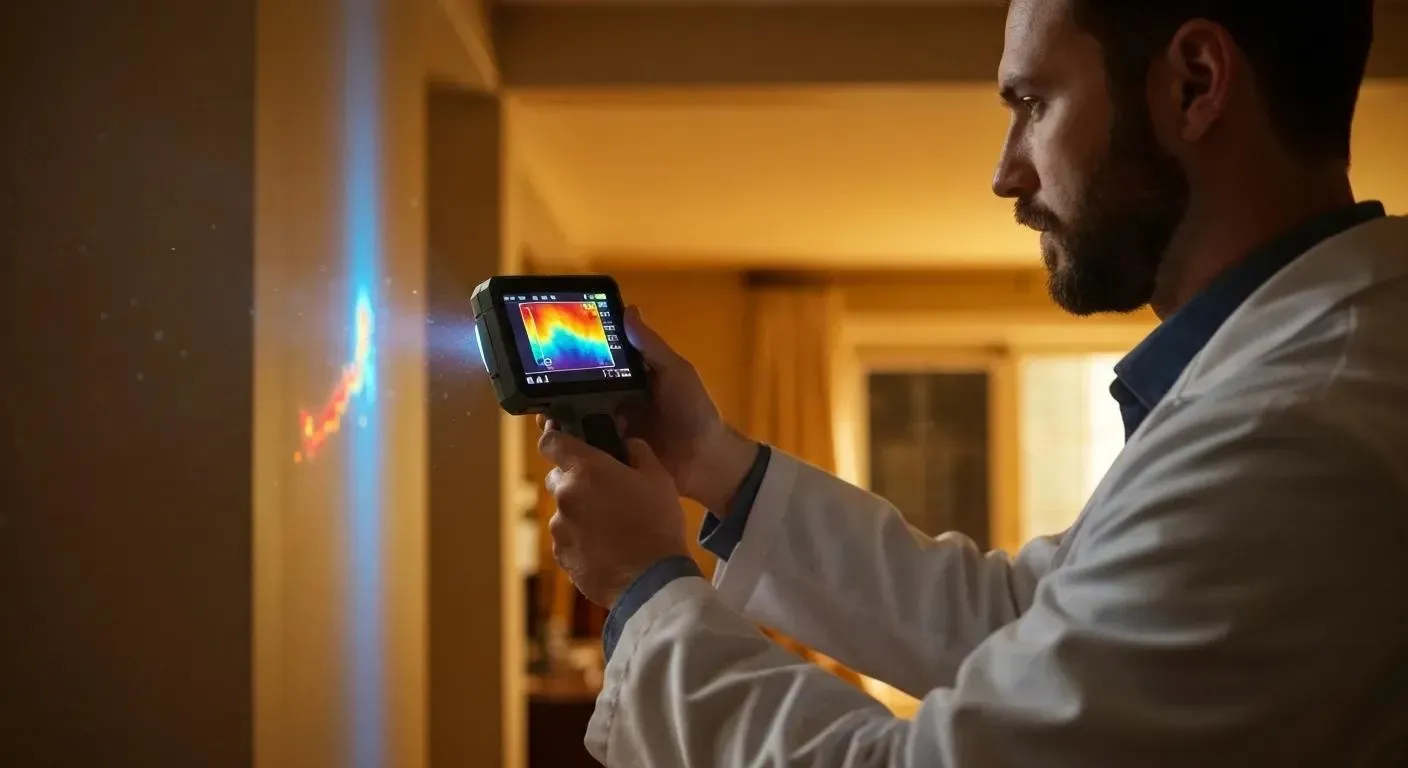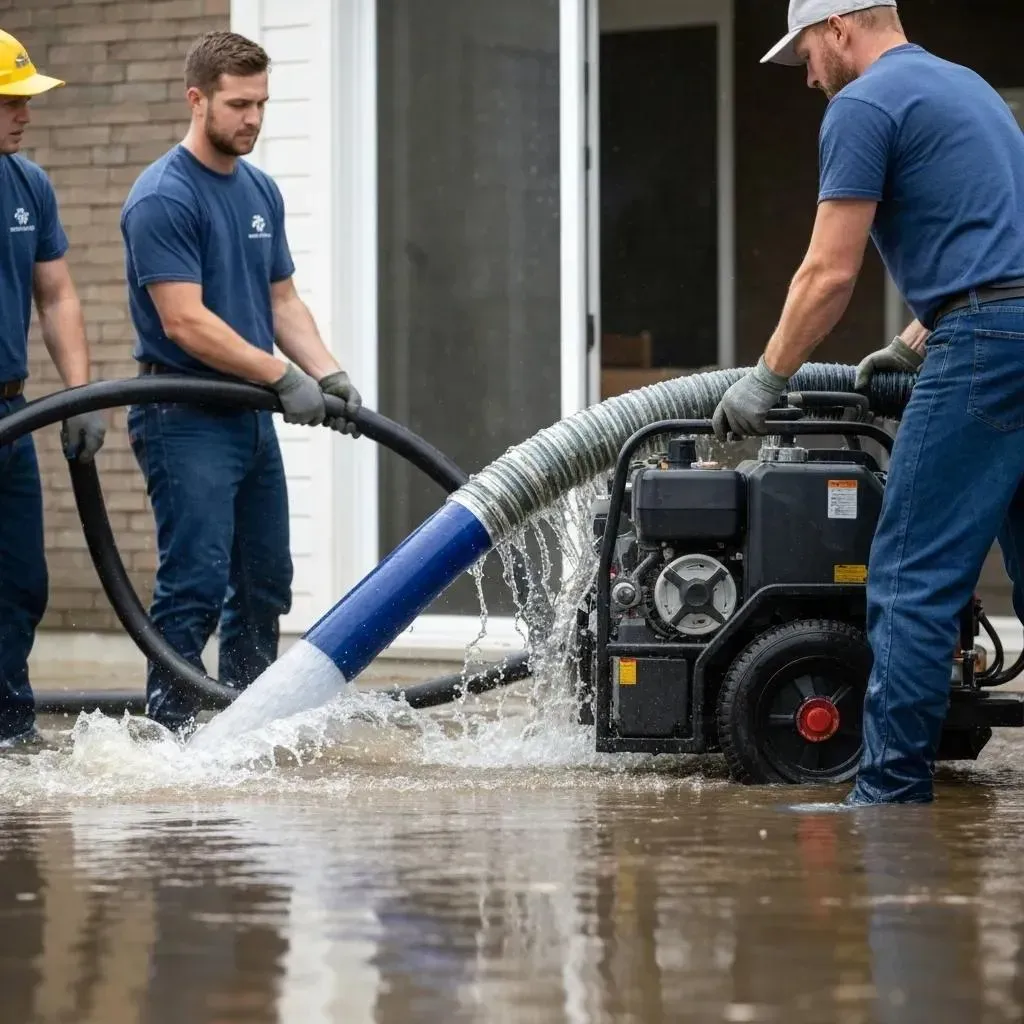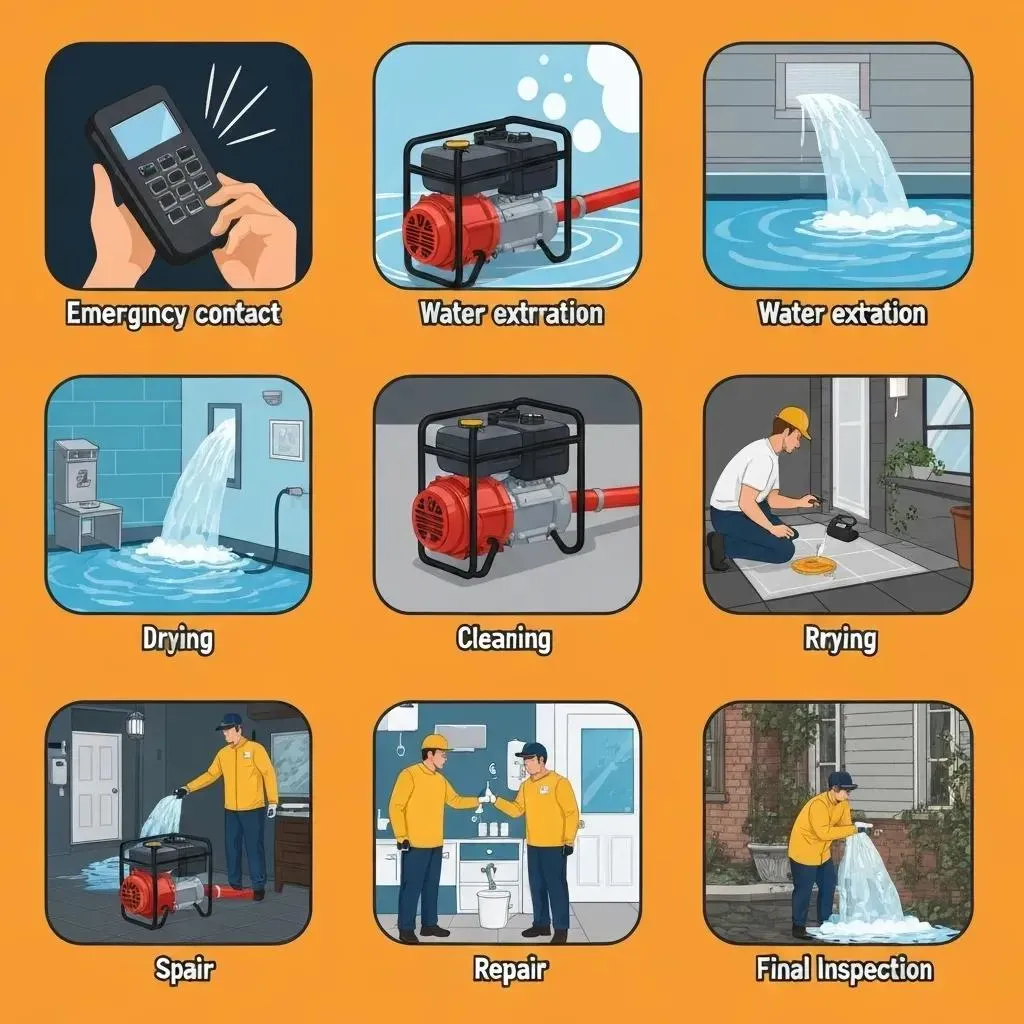Blog
What is a Thermography Test and Why Does It Matter for Your Home?
A thermography test is a non-invasive inspection that uses an infrared camera to detect heat patterns and temperature differences on surfaces. This technology helps spot hidden problemsike moisture behind walls, areas of energy loss, or even electrical issuesbefore you see visible damage or feel a draft in your home.
Quick Answer: What is a thermography test?
- Definition: Scan using an infrared camera to reveal heat patterns on walls, ceilings, floors, or equipment.
- Purpose: Detects problems such as moisture intrusion, insulation gaps, air leaks, and electrical hot spots.
- Process: No contact needed; a technician scans surfaces and instantly sees temperature differences.
- Benefits: Fast, painless, and does not cause any damageideal for finding issues early, especially after water or fire damage.
- Common Uses: Mold risk assessment, energy audits, catching hidden leaks, and checking repairs after restoration.
Thermography is a noninvasive imaging test that uses an infrared camera and no radiation to detect temperature differences on the skin, offering multiple clinical applications.
Homeowners in Denver appreciate thermography because it identifies issues unique to Colorados climatelike cold air leaks and moisture from sudden snow meltslong before they turn into major headaches. By catching hidden water or insulation problems early, you can prevent mold growth, save on energy bills, and protect your biggest investment.
My name is Mike Martinez. As the owner of Accountable Home Services, Ive overseen countless thermography test inspections in Denver homeshelping families catch moisture, mold, and insulation problems before they escalate.
Thermography works by detecting heat patterns, not just visible damage. For example, a wall may look perfectly fine on the outside, but a thermography test can reveal a cold spot where insulation is missing or a warm patch that signals hidden moisture. This functional insight is what sets thermography apart from traditional inspections that only look for visible signs of trouble.
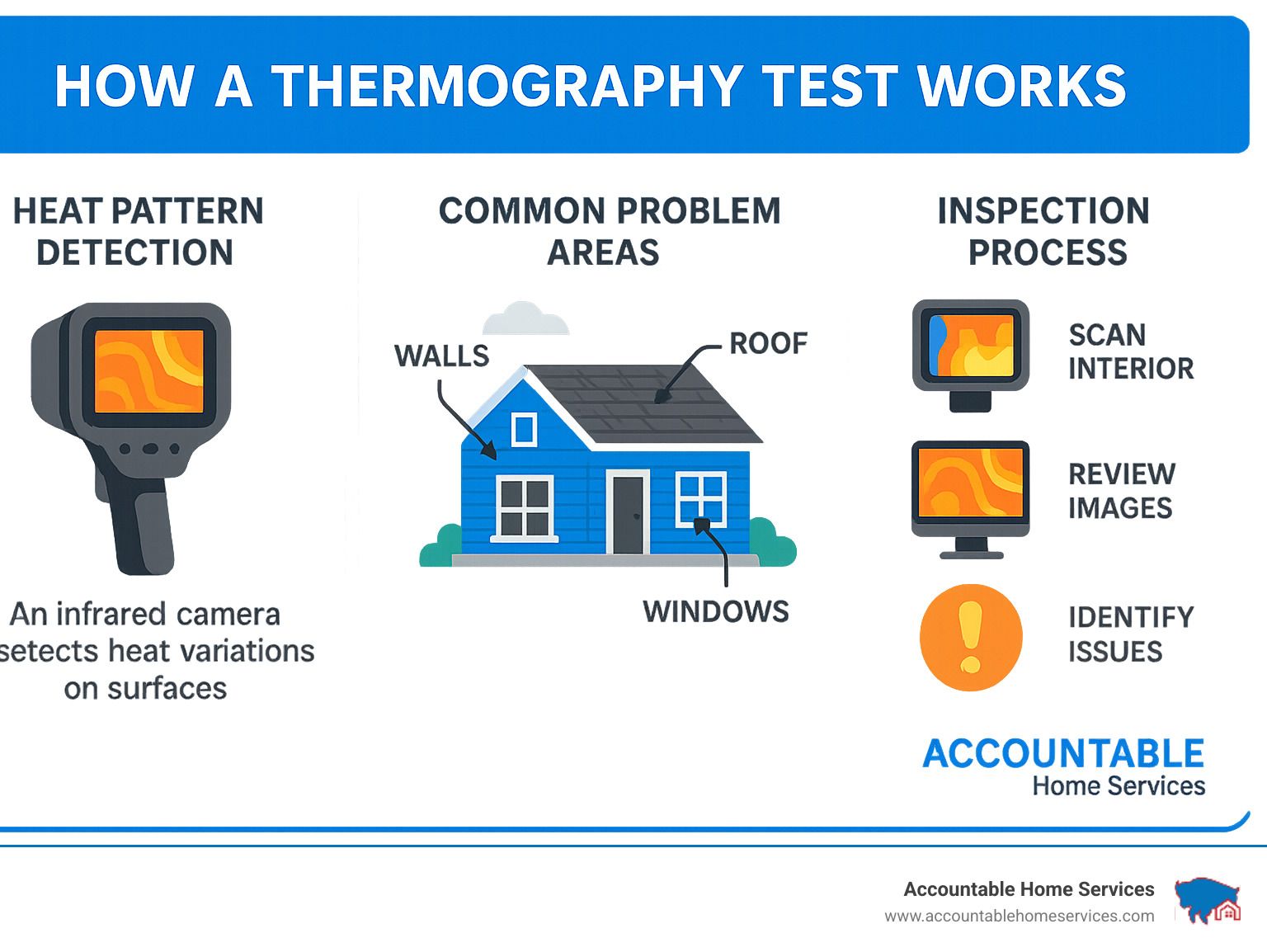
How Infrared Thermography Works
Let’s peel back the curtain on what’s really going on during a thermography test—and why it’s so effective for spotting trouble in Denver homes.
At its core, thermography taps into a fascinating principle: all objects, whether it’s your living room wall or the wiring behind your fridge, naturally give off infrared radiation. The hotter something is, the more of this invisible energy it releases. While our eyes can’t see infrared, a digital infrared thermal imaging camera can, and it translates these “hidden” heat signals into color images known as thermograms.
During a thermography test, our trained technicians use high-grade infrared cameras that are calibrated to detect even tiny temperature changes—sometimes as subtle as a hundredth of a degree. This remarkable sensitivity lets us spot things you’d never notice otherwise: moisture hiding behind drywall, missing insulation along an exterior wall, or a wire that’s running a bit too hot for comfort.
Now, here’s where things get interesting. Infrared radiation sits just beyond visible light on the electromagnetic spectrum, so the camera “sees” differences our eyes miss. It converts temperature readings into bright, color-coded images—think red and yellow for warmer spots, blues and purples for cooler patches. You might see a rainbow on your living room wall, but to us, it’s a detailed map of potential issues.
Another key player is emissivity. Different surfaces—like brick, wood, or drywall—emit heat in their own unique way. Our calibrated equipment, plus a technician who understands what to look for, ensures the readings are accurate and useful, no matter the surface.
In the medical world, thermography works because our sympathetic nervous system changes blood flow and skin temperature when there’s inflammation or disease—if you’re curious, this scientific research on medical thermography explains how this helps detect certain conditions. In the home, we use similar principles: instead of blood flow, we’re tracking heat patterns to flag issues like leaks, energy loss, or hidden mold risks.
“Infrared thermography detects thermal waves that are invisible to the naked eye—making it a powerful tool for both medical and building diagnostics.”
This isn’t pie-in-the-sky technology. Organizations like the Institute of Physics and Engineering in Medicine recommend thermography for non-invasive temperature mapping—so it’s a proven, research-backed approach, not just a fancy gadget.
Functional vs Structural Imaging
Let’s talk about what makes a thermography test different from other types of imaging. Here’s the key: thermography gives you functional information rather than just a snapshot of how things look on the inside.
Functional imaging reveals how things are working. In your home, that means uncovering a damp patch hidden inside a wall, a cold spot from missing insulation, or a hot circuit that could become a hazard. By contrast, structural imaging—like X-rays, MRIs, or CT scans—shows you what’s physically there, such as a broken pipe or a cracked beam.
To make it even clearer, here’s how they stack up:
Imaging Type: Thermography
What It Shows: Heat patterns, function
Example Use: Moisture, leaks, insulation
Safety: No radiation, non-contact
Imaging Type: X-ray, MRI, CT
What It Shows: Anatomy, structure
Example Use: Broken pipes, fractures
Safety: May use radiation, contact needed
When it comes to home diagnostics, we’re usually less interested in what the inside of your wall looks like and more focused on whether something’s going wrong behind it. That’s where a thermography test shines—you get functional insight into potential problems, fast and safely.
At Accountable Home Services, our goal is to use this science-driven, non-invasive technology to help Denver homeowners get real answers and peace of mind, without the guesswork. If you want to learn more about how a thermography test can help protect your home, get in touch with our experts—we’re always here to help!
Thermography Test: From Booking to Report
Thinking about booking a thermography test with Accountable Home Services? Heres exactly what happens, from your first call to getting your reportso there are no surprises, just peace of mind.
The process starts with scheduling your appointment. Well work with you to pick a time that fits your schedule, andsince Denvers climate varies so muchwell aim for a day when theres at least a 201F temperature difference between inside and out. This helps the test reveal issues like air leaks or insulation problems much more clearly.
Next comes the pre-test acclimation. After we arrive, we may ask you to keep your home at a steady indoor temperature, and, in some cases, to run the heat or AC for a few hours before the scan. This thermal loading step is keyit exaggerates temperature differences and makes hidden trouble spots light up on our infrared cameras.
When its time to scan, we follow a proven six-image protocol for focused areas like walls, ceilings, or suspicious spots. For full-home energy audits, we move methodically from room to room, including places like attics and crawlspaceswhere little problems like to hide.
A typical thermography test session takes about 3040 minutes for an average home. If you have a larger house or more complex concerns, well take the time needed to get it right. Throughout the scan, our certified technicians use calibrated, professional-grade cameras and never rushyour home deserves a thorough look.
Heres where our expertise really comes in: every image is reviewed by a board-certified thermologist or building scientist. Sometimes issues can be spotted in real-time on-site; other times, a detailed digital review is needed, especially for trickier moisture or insulation problems.
Preparing for Your Thermography Test
Getting ready for your thermography test is simple, but a little prep makes all the difference. Skip the gym and heavy chores before your appointmentphysical activity can warm you up and mask the very issues were trying to find. If this is a medical scan, avoid lotions, creams, deodorants, or powders, as these can insulate your skin and skew the results.
At home, keep all doors and windows closed to stabilize the temperature. For the most accurate scan, try to create at least a 201F difference between inside and outsideturn up the heat in the winter or crank the AC in the summer. Move furniture away from exterior walls and pull down drapes or take down anything big thats hanging where well be scanning. Well send you a prescan checklist when you book, so youll have everything covered.
What to Expect During a Thermography Test
During your thermography test, our technician will scan your home without touching anythingno holes, no mess, and zero damage. Well stand a few feet away from each surface, using different angles and heights to get the most accurate thermal images possible. The camera instantly turns invisible temperature differences into colorful thermograms, making hot and cold spots pop out right away.
If we find something urgentlike a hot electrical spot or an active leakyoull know immediately. Most folks are amazed to see just how much energy can escape around a window, or how a tiny leak glows bright on our screen. Its both eye-opening and, honestly, a little empowering to finally see whats been hiding behind the walls.
Post-Scan Timeline & Reporting
After your scan, we carefully review and interpret every image. For medical or trickier building issues, a certified professional examines the thermograms to make sure nothing is missed. Youll receive a detailed digital report in 13 days. This includes annotated images, clear explanations of what we found, and expert recommendations for your next steps.
If youre keeping an eye on a recurring problemlike a stubborn leak or insulation fixwe can use your previous scans as a baseline, making it easy to track progress over time.
At Accountable Home Services, our goal is simple: give you accurate answers, clear guidance, and the confidence to take actionwhether that means a quick repair or simply enjoying the peace of mind you deserve.
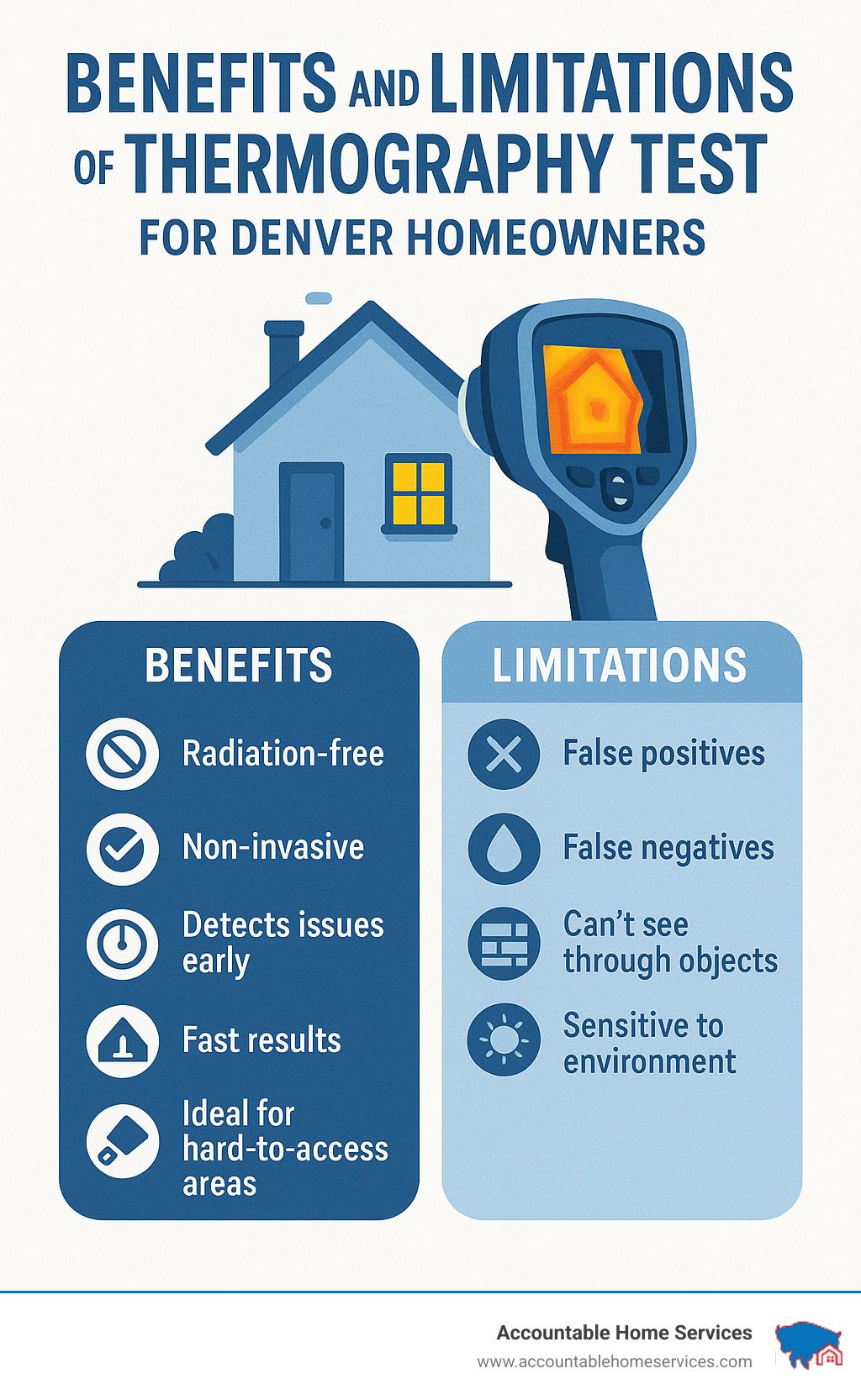
Conclusion
A thermography test is truly one of the smartest, least disruptive ways you can protect your home—and your wallet—from surprise headaches. Whether you’re dealing with sneaky moisture after a spring storm in Broomfield, tracking down insulation gaps in Boulder, or double-checking restoration work in Arvada, thermal imaging gives you clear, actionable answers before the little stuff turns into a big, expensive mess.
Here at Accountable Home Services, we’re more than just restoration pros—we’re your neighbors, looking out for Denver families with the latest tools and science-backed techniques. Our team is certified, our equipment is best-in-class, and our service is built on years of experience helping Colorado homeowners weather every kind of challenge. From thermal imaging inspections to full-scale restoration and remodels, we’re dedicated to clear communication, fast response, and lasting results you can trust.
If you’d like peace of mind or need answers now, we’re here—24/7. Contact Accountable Home Services for a free consultation or to request emergency service. Let’s use a thermography test to catch problems early, keep your energy bills in check, and make sure your home is as safe and comfortable as it can possibly be.
We’re proud to serve homeowners across Broomfield, Westminster, Thornton, Northglenn, Arvada, Boulder, Denver, Longmont, and Erie, Colorado. With Accountable Home Services, you get transparent advice, expert workmanship, and a partner who puts your needs first—every time.
Meta Description:Find how a thermography test works, what it detects in your Denver home, and why Accountable Home Services is your local expert in infrared thermal imaging for mold, water, and energy issues. Book a scan today!

